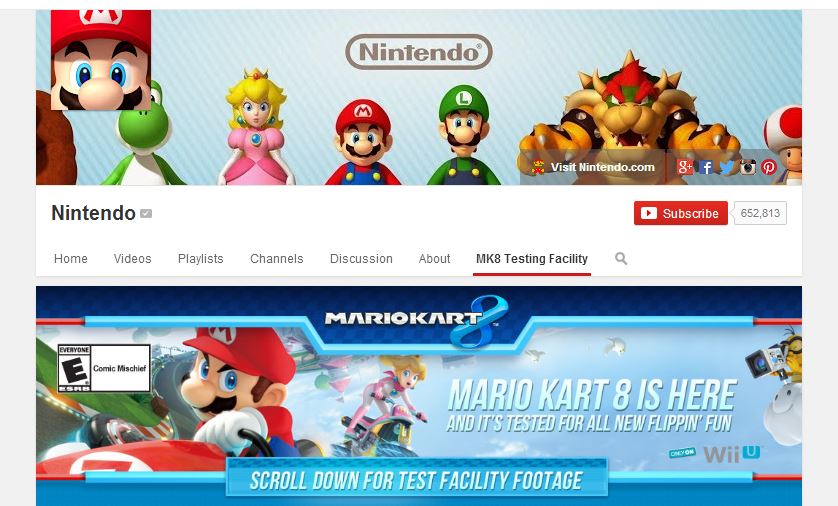Back in 2013 Nintendo imposed harsh policies on usage of content from their games on Youtube. The Japanese company claimed all ad revenue from any video using Nintendo IP, including footage with fan commentary and playthroughs. Of course, for those attempting to reap the benefits of a productive YouTube partnership this came as a major blow.
“As part of our ongoing push to ensure Nintendo content is shared across social media channels in an appropriate and safe way, we became a YouTube partner and as such in February 2013 we registered our copyright content in the YouTube database,” Nintendo said, in a response to social media uproar at the treatment of fans. However, the company claimed to be showing its soft side, claiming that seizing revenue generated by videos including their IP was a less harsh alternative to simply having the videos taken down under copyright laws. On the flip side, Nintendo content spawned targeted advertising.
See also: Nintendo Giving Away Free Mercedes – But Only in Mario Kart 8
“For most fan videos this will not result in any changes, however, for those videos featuring Nintendo-owned content, such as images or audio of a certain length, adverts will now appear at the beginning, next to or at the end of the clips. We continually want our fans to enjoy sharing Nintendo content on YouTube, and that is why, unlike other entertainment companies, we have chosen not to block people using our intellectual property.”
Now, in 2014, the company, which has been experiencing financial difficulties due to the poor performance of the Wii U and several setbacks in adapting to current industry trends, has relaxed this draconian edict, allowing users to benefit from a percentage of generated revenue in a new program the company is releasing.
If Nintendo approves the content creator’s videos and marks them out as an ‘official affiliate’ the user can take back some of the generated advertising money. However, not much information has been received on how the program NIntendo are implementing will be set up, as all the information currently in the wild comes in the form of two tweets on the company’s Japanese Twitter feed.
Nintendo have been quite slow to adapt to recent trends in the gaming market, most certainly the new trend of high quality graphics, as well as being quite insular in terms of how their products interact with other digital services, such as social media. Nintendo’s network is sadly, quite a closed one, meaning fans are unable to do much outside of the boundaries set when using the company’s own products.
Compared to leading competitor in Japan, Sony, who have successfully integrated as much of the digital world into Playstation devices as they possibly can, Nintendo seem archaic and unwilling to change. Their network relies on the user to be fully dedicated to using their services, which are now being further retracted, as Wii, classic Nintendo DS and DSi online services have been ended roughly ten days ago, while online services, new titles, and updates are still being served to the console’s contemporaries of that era, the Xbox 360 and PS3.
The veteran gaming giant has however, not given up. Nintendo seem to be starting the slow process of coming up to speed, as a YouTube posting option is clearly available in Mario Kart 8, whether this marks the start of a new era for Nintendo, as the truth of the matter is that in the gaming industry it’s all about survival of the fittest in a market where the consumer is very clear about what they want from a product; companies must always take relevant steps to adapt, or perish.

